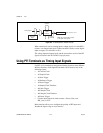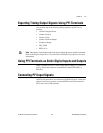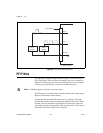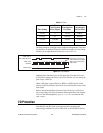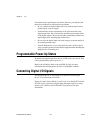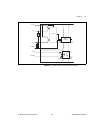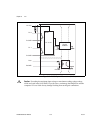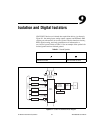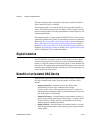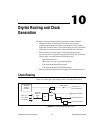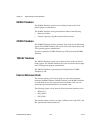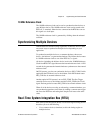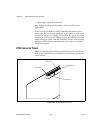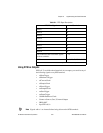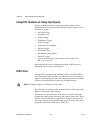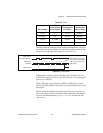
Chapter 9 Isolation and Digital Isolators
NI 6232/6233 User Manual 9-2 ni.com
The non-isolated ground is connected to the chassis ground of the PC or
chassis where the device is installed.
The isolated ground is not connected to the chassis ground of the PC or
chassis. The isolated ground can be at a higher or lower voltage relative to
the non-isolated ground. All analog measurements are made relative to the
isolated ground signal.
The isolated ground is an input to the NI 6232/6233 device. The user must
connect this ground to the ground of system being measured or controlled.
Refer to the Connecting Analog Voltage Input Signals section of Chapter 4,
Analog Input, the Connecting Analog Voltage Output Signals section of
Chapter 5, Analog Output, the Connecting Digital I/O Signals section of
Chapter 6, Digital Input and Output, and the Connecting PFI Input Signals
section of Chapter 8, PFI, for more information.
Digital Isolation
The NI 6232/6233 uses digital isolators. Unlike analog isolators, digital
isolators do not introduce any analog error in the measurements taken by
the device. The A/D converter, used for analog input, is on the isolated side
of the device. The analog inputs are digitized before they are sent across the
isolation barrier. Similarly, the D/A converters, used for analog output, are
on the isolated side of the device.
Benefits of an Isolated DAQ Device
With isolation, engineers can safely measure a small voltage in the presence
of a large common-mode signal. Some advantages of isolation are as
follows:
• Improved rejection—Isolation increases the ability of the
measurement system to reject common-mode voltages.
Common-mode voltage is the signal that is present or "common" to
both the positive and negative input of a measurement device, but is not
part of the signal to be measured.
• Improved accuracy—Isolation improves measurement accuracy by
physically preventing ground loops. Ground loops, a common source
of error and noise, are the result of a measurement system having
multiple grounds at different potentials.
• Improved safety—Isolation creates an insulation barrier so you can
make floating measurements while protecting against large transient
voltage spikes.



